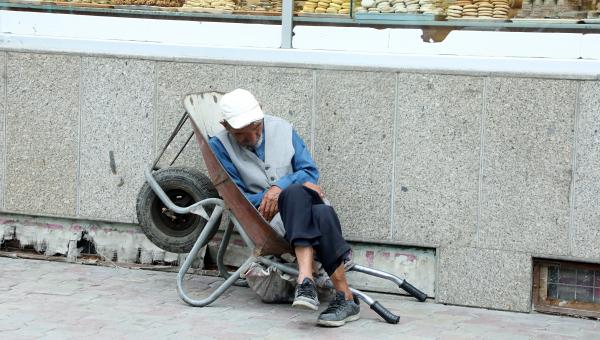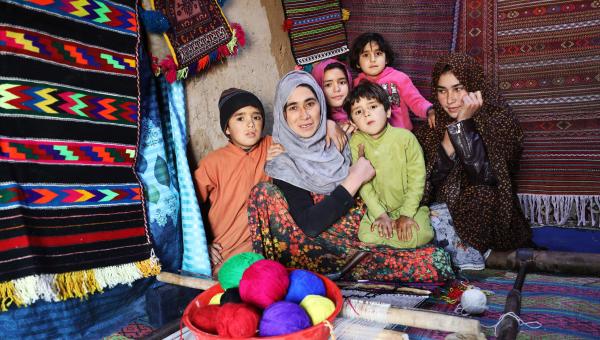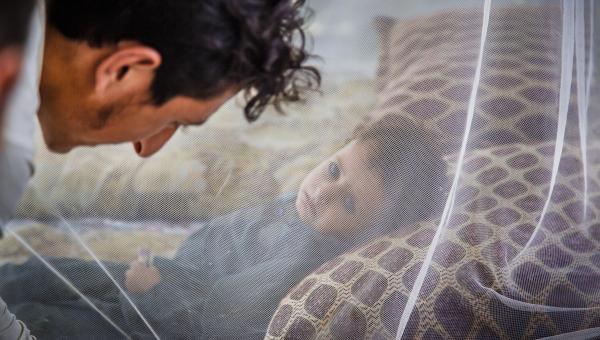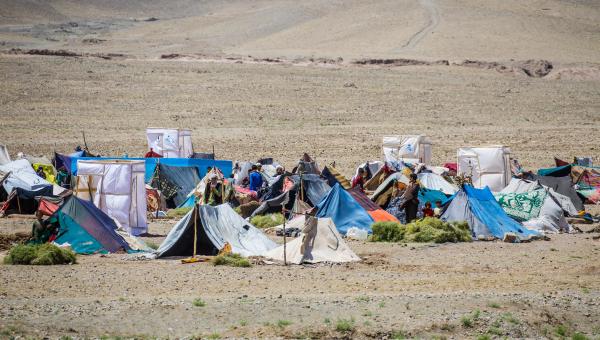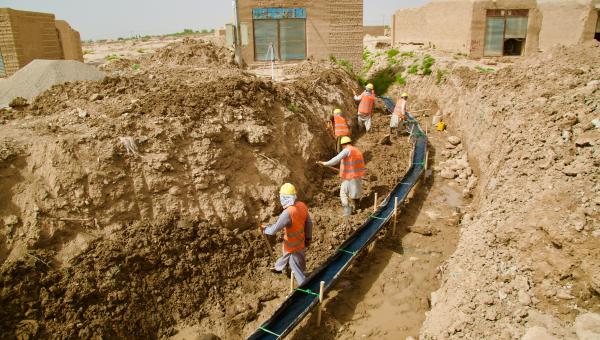TB/MDR-TB interventions among
Afghan refugees, returnees and mobile populations in Afghanistan, Iran and Pakistan
Overview
Movements within the country and across borders remain one of the key characteristics and a major challenge for Afghanistan.
Since 2012, the number of Internally Displaced Persons (IDP) has increased nine times - from 492,000 in 2012, over 1.5 million in 2016, 2.5 million in 2018 and by the end of 2021, an estimated 4.3 million Afghans were living in internal displacement due to conflict, and more than 891,000 due to natural disasters.
Among the stock of IDPs globally, Afghanistan hosted the highest number. However, these movements were from rural to urban areas within the provinces. An estimated 239,000of those displaced were in the main cities of the country, adding to the burden within these cities.
Afghanistan has witnessed a significant population movement with more than 2 million Afghans emigrating to neighbouring countries. Among them, 62% have settled in Pakistan, 37.6% in Iran, and the remainder in northern bordering nation
While these figures primarily represent registered refugees, the actual number of Afghan refugees and migrants, particularly in Iran and Pakistan, is much higher, reaching nearly 7 million (3.6 million in Iran and 3.9 million in Pakistan).
This vulnerable population faces heightened health risks and limited access to healthcare services. In 2022, there was a historic surge in Afghan migration to neighbouring countries, with over 1,268,730 new arrivals. Approximately 1 million arrived in Iran, while 250,000 sought refuge in Pakistan in the same year.
TB epidemiology in the three countries
In Afghanistan, tuberculosis (TB) remains a significant public health concern, with an estimated incidence of 189/100,000 and mortality among HIV-negative patients at 31/100,000 (WHO, 2022 Global TB Report). Although the country reported a treatment coverage of 66% in 2021, there has been an encouraging upward trend in TB notifications, increasing from 35,878 in 2015 to 50,324 in 2021, indicative of reduced incidence notification gaps. Multi-drug resistant (MDR) TB is estimated at 5.4% among new cases and 36% among retreatment cases. While progress has been made in diagnosing drug resistant TB (DR-TB) cases with 582 cases identified in 2021, only 412 of those diagnosed were enrolled for DR-TB care, revealing a 29% detection-treatment gap. The treatment success rate for the 2020 TB cohort was 95% among drug-susceptible TB, and 71% among drug-resistant TB for 2019 cohort. In Pakistan, a country with high TB burden, the estimated incidence is 264/100,000, with mortality among HIV-negative patients at 21/100,000 (WHO, 2022 Global TB report). Despite stagnant notifications over the last 5 years, ranging from 323,856 in 2015 to 339,256 in 2021, treatment coverage has been low at 55% in 2021. Multi-drug resistant (MDR) TB is estimated at 2.5% among new cases and 4.9% among retreatment cases. The country reported 2,300 laboratory-confirmed DR-TB cases, and 89% of these were enrolled in treatment. The treatment success rate for the 2020 TB cohort was 94% among drug-susceptible TB, and 73% among drug-resistant TB for 2019 cohort. Iran, with the lowest TB burden among the three countries in this multi-country grant, has an estimated incidence of 12/100,000 and mortality among HIV-negative patients at 1/100,000 (WHO, 2022 Global TB Report). The country reported a treatment coverage of 60% in 2021, showing a declining trend in TB notifications from 10,215 in 2015 to 6,199 in 2021. Multi-drug resistant (MDR) TB is estimated at 1.8% among new cases and 7% among retreatment cases. The country reported 39 laboratory-confirmed DR-TB cases, and 34 of these enrolled in treatment. The treatment success rate for the 2019 TB cohort was 84% among drug-susceptible TB, and 63% among drug-resistant TB for 2019 cohort.
Background for multi-Country TB Grant
Both IDPs and returnees remain key populations for TB, experiencing an estimated 2-3 times higher TB burden compared to the general population. The persistent challenges of poor living conditions, low socio-economic status, and limited healthcare access remain key barriers to TB care services for these populations.
Therefore, Global Fund awarded a regional grant on improving TB/MDR-TB interventions among Afghan refugees, returnees and mobile populations in Afghanistan, Iran and Pakistan initally between 2019 – 2021, which was extended for another implementation period (2022 – 2024).
Objectives
The overall objective of this grant is to create catalytic effect for increased impact among Afghan refugees, returnees, and mobile populations across the three countries. The specific objectives associated with the grant are:
- Strengthening collaboration, information sharing and diagnosis/treatment service between health service providers providing services to Afghan refugees, returnees and migrants and the respective national TB control programs in the host countries, with the aim of finding and treating TB cases among mobile Afghan populations.
- Strengthening cross-border information sharing and referrals among NTPs in the three countries, to ensure treatment is not disrupted for patients relocating from one country to another.
Strengthening the capacity of the national TB control program in Afghanistan to effectively diagnose and treat TB cases amongst returnees.
Major Achievements
Afghanistan
- IDPs were screened in 8 Priority Areas of Return and Reintegration (PARR) by CHWs who managed to identify 2,683 presumptive TB cases who were tested with either sputum microscopy or GeneXpert. The project managed to detect 175 TB cases who are also reported through the DHIS2.
- Training of the focal points both at the border crossing points and IDP settlements.
- The returnees were screened in four border crossing points – identification of the presumptive TB cases, testing of the presumptive TB cases and detecting TB cases.
- Nearly all detected TB cases were enrolled for treatment in health facilities near to the IDP settlements.
- Quarterly coordination meetings were conducted in the respective provinces with the participation of the focal points, the NTP provincial TB teams, the BPHS/EPHS representatives and others. It provided a better platform for further improving the implementation within the target settlements.
Iran
- A total of 246,659 refugees/migrants were screened during 2022. Among the screened populations, 1,200 TB cases were notified. Of the 1,200 TB cases, 337 cases were detected through ACF approaches supported by the grant.
- Screening of the Afghan migrants (documented and undocumented) was carried out within 11 UMSs across nine provinces of the country.
- Procurement of the Chest X-ray and mobile TB clinic was carried out. Addition of the Chest X-ray will further improve case finding activities.
- Procurement of the GeneXpert machines and supply to the target sites for the purpose of screening target populations.
Pakistan
- 150,226 refugees screened in 2022. Among those, 14,039 presumptive TB cases (9.3% of the total screened) were identified and referred for further testing. Almost 8% of the presumptive TB cases were diagnosed with TB, so 1,089 TB cases were notified by NTP Pakistan among refugees within 45 RVs.
- The outreach activities including inception meetings, community coalition meetings, district surveillance meetings, biannual staff review meetings and community outreach gatherings were successfully conducted during the latter half of the year when the COVID-19 lockdowns and restrictions were relaxed.
- IEC materials were developed, printed and distributed among the target populations, which increased awareness about TB among the target populations.
Related Materials
Impact
Relevant Content

 Locations
Locations
